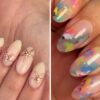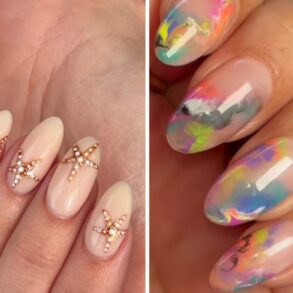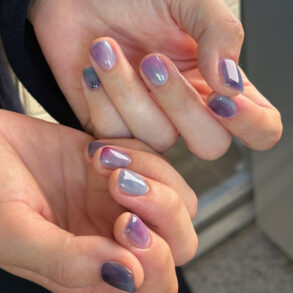Kim Truong has held some of the most pampered hands on the planet. As a go-to nail artist for celebs such as Kim Kardashian, Kylie Jenner, Kerry Washington, and Dua Lipa (to name a few), she’s spent much of her career being an integral part of transforming people into their most glamorous selves. She also recently became an ambassador for Gitti, a vegan, eco-friendly nail polish brand out of Berlin that launched in the U.S. this summer.
But as one of the first Vietnamese American celebrity manicurists, she is also an icon in her community.
When I spoke with Truong, she was getting ready for a trip to Vietnam, where much of her extended family lives. And, although Troung is American, it’s not lost on her that she is still part of a cultural legacy that has become a racial trope in this country: the Asian nail tech.
Growing up, we saw comedians rip on Vietnamese nail ladies all the time, laughing at the way manicurists would talk shit about their clueless clientele’s raggedy cuticles in a language that was presented as so foreign that it was part of the joke.
There’s an actual theory as to why so many nail tech roles are filled by Vietnamese women. Tippi Hedren, a white Hollywood actor who volunteered at a Sacramento camp for Vietnam War refugees in 1975, helped 20 Vietnamese women become licensed nail technicians, NPR explains. Those nail technicians reportedly spread their skills through their communities and soon, Vietnamese immigrants began to open nail salons everywhere, offering prices that were accessible to middle-class Americans.
When Truong’s family moved to the U.S., her mother became part of that movement by earning her nail license. At 18, Truong got her own license and paid her way through college by helping her mom out at her nail salon.
But Truong had always seen doing nails as a means to an end; it was, after all, one of the jobs that allowed Vietnamese immigrants to survive and gain a financial footing in America for at least a generation. Troung knew that she wanted to pursue a different path, so she moved from Maryland to Los Angeles to attend dental school. “When I went to LA, the last thing I wanted to do was nails,” she says.
But she needed to work while she was in school, and several restaurants and coffee shops that Truong applied to told her that she didn’t have enough experience. The only place that hired her was a nail salon in Hollywood, where she quickly became known for her talent — and where she was recommended to celebrities such as Kim Kardashian. And so, six months after graduating from dental school, Truong started down a path she thought she’d avoid: doing nails full-time.
Truong has a quiet confidence that’s immediately palpable — and even comforting. It feels as if she trusts that fate will always lead her in the right direction. And her chill disposition and grounded energy are actually part of her success.
“One time, Kelly Rowland told me, ‘I just love your voice,’’’ she said. She’s so treasured by celebrities that last year, Katy Perry flew Truong and her sister out to Capri for a Dolce & Gabbana shoot. “It’s rare that a celebrity brings their manicurist with them. For her to fight for us… I thought it was a really touching thing.”
By creating intricate works of art on some of the world’s most visible people, Truong is literally helping shape the direction of our style culture. A single viral look on a celebrity can determine how the rest of us paint our nails for an entire season, whether it’s flowers on chrome on Kerry Washington’s nails or Hello Kitty figures on Truong herself, people are looking to her to get an idea of what’s going to be relevant next.
As children of immigrants, many of us saw our parents work hard at jobs that were considered inferior because, in America, you’re only as good as the white imagination believes you to be. But there are Vietnamese nail ladies who work in both strip malls and celebrity spaces creating masterful art every day — the type that requires immense precision, patience and creativity. And they’re seldom recognized for their craft.
Truong did for nails what Michelangelo did for church ceilings, by adorning and reimagining them as canvases. By elevating her art form, she is also elevating an entire group of people who have been the targets of xenophobic jokes. And her career is an example of the beauty and innovation that can come from knowing your worth as the child of immigrants.
But Truong’s motivations appear to be simpler than all of that. “When I do people’s nails, I want them to love them and be happy,” she says. “And the thing with hair and makeup is they’ll get their makeup done, their hair done and that washes off. But nails can last for two weeks, you know, so you can be happy a little longer.”
This post was originally published on this site be sure to check out more of their content.







